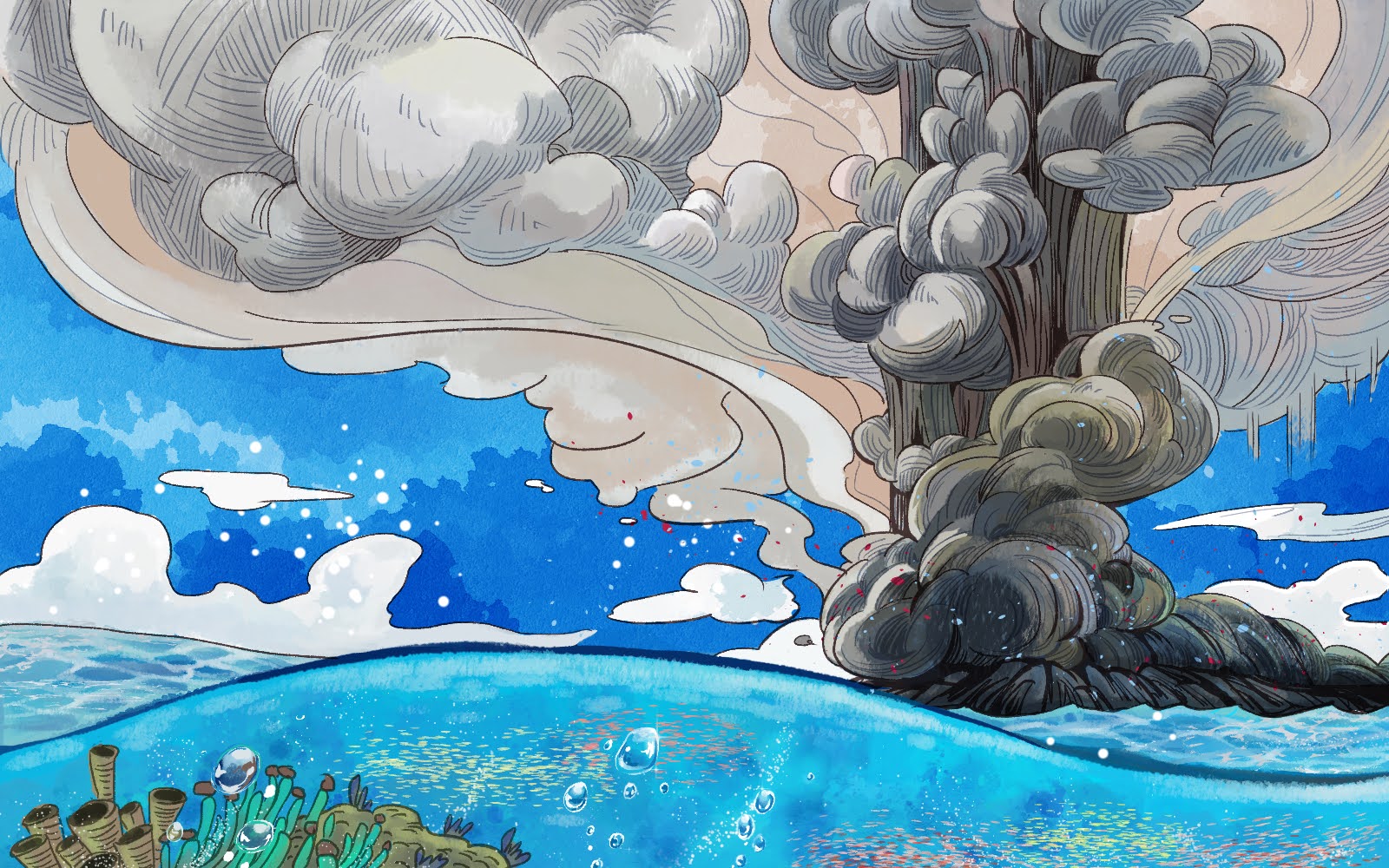Hunga-Tonga volcanic eruption and water vapor
Yunqian Zhu leads study on injection of water vapor into the stratosphere
The January 2022 Hunga-Tonga Ha'apai Hunga (HTHH) volcanic eruption injected significantly more water into the stratosphere than previously seen in the modern satellite record. Observations still show elevated stratospheric water vapor up to the present day. These data provide a natural testbed to show how increased water vapor can impact the Earth's system. Our model simulation is the first research that simulates this elevated water vapor and investigates its impact on stratospheric sulfur chemistry, aerosol formation, and ozone chemistry. It explains how so much water can stay in the stratosphere for such a long period of time; why large amounts of sulfate aerosol are observed right after the eruption; and why a small amount of SO2 injection can lead to such a large persistent volcanic cloud. We also utilize a state-of-the-art seasonal forecast technique to predict the potential impact of this eruption on Antarctic ozone depletion. We find that elevated water vapor and aerosol will still exist in the stratosphere near the polar vortex for at least another six months and impact ozone depletion.
Read more of our work at communications earth & environment: Perturbations in stratospheric aerosol evolution due to the water-rich plume of the 2022 Hunga-Tonga eruption
